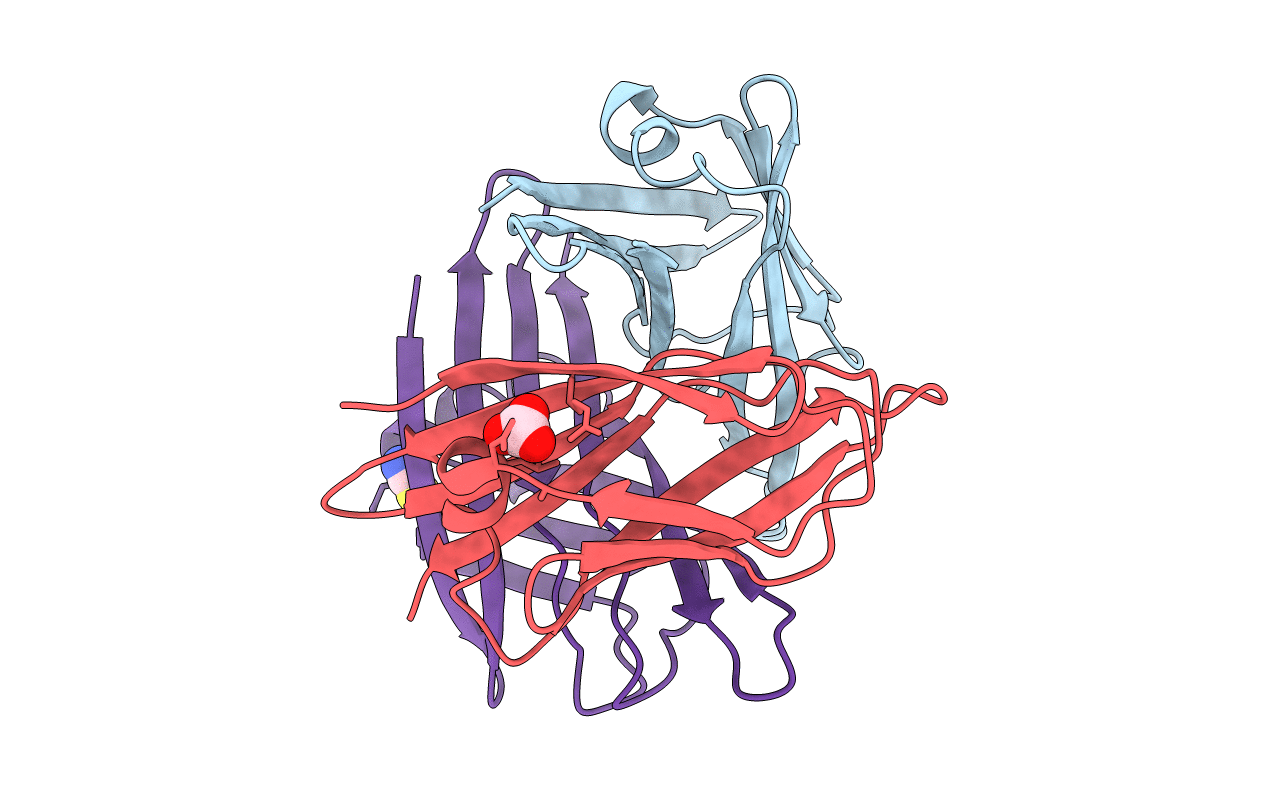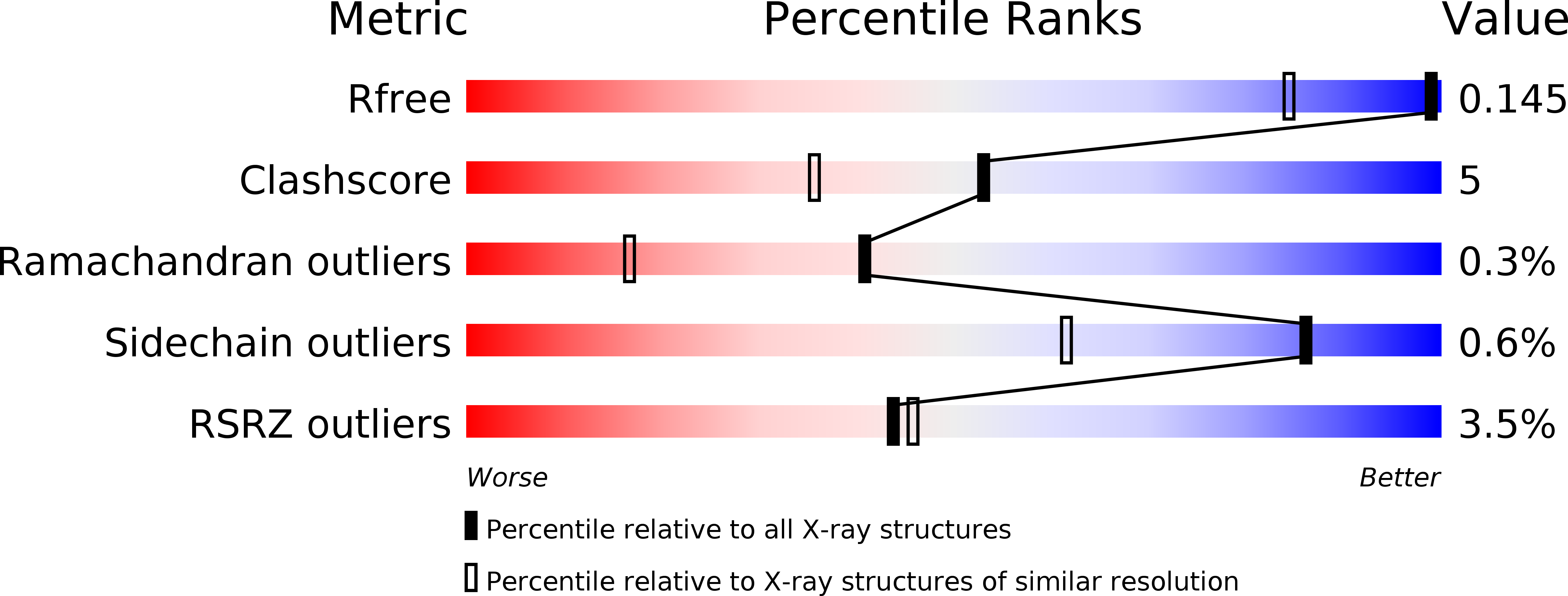
Deposition Date
2014-12-14
Release Date
2015-06-03
Last Version Date
2024-05-08
Entry Detail
PDB ID:
4UE0
Keywords:
Title:
Structure of the bovine atadenovirus type 4 fibre head protein
Biological Source:
Source Organism:
BOVINE ADENOVIRUS 4 (Taxon ID: 70333)
Host Organism:
Method Details:
Experimental Method:
Resolution:
1.17 Å
R-Value Free:
0.14
R-Value Work:
0.11
R-Value Observed:
0.11
Space Group:
P 1


